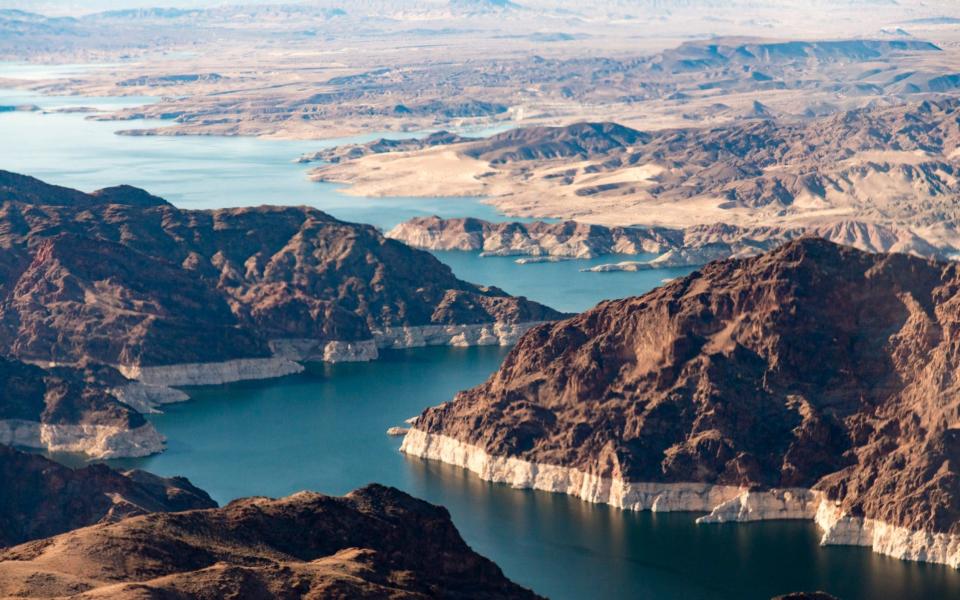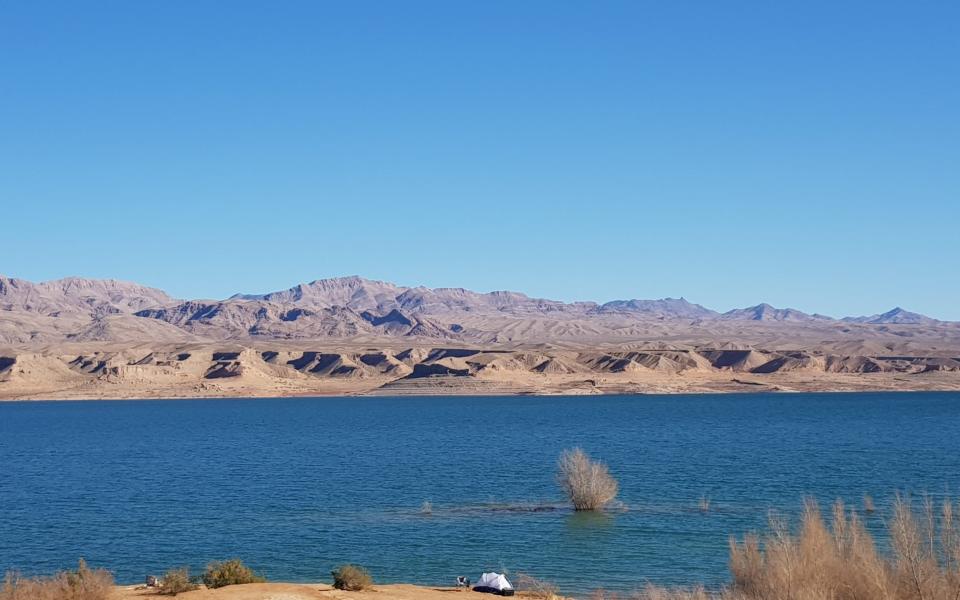The abandoned US holiday resort that's been left out to dry

A geographic extension of the Grand Canyon, the 120-mile long, 500ft-deep Lake Mead is America’s largest reservoir. The lake was formed in 1936 with the creation of the massive Hoover Dam in the Black Canyon of the Colorado River, on the border between Nevada and Arizona.
The reservoir, which dropped to its lowest ever level this month, is also one of the country’s most intriguing yet ghostly tourist destinations. It's now at just 36 per cent of its capacity following a sustained “mega drought ”, which threatens water supplies to 40 million people across the US Southwest and looks likely to prompt a federally declared water shortage later this summer.
Located on a fault line 35 miles south-east of Las Vegas, the lake and land around it are the country’s largest and oldest National Recreation Area – offering 1.5 million acres of stark topography. Empty mountain ranges neighbour valleys and canyons, formed by an epic combination of plate tectonics and volcanic activity. Millions of years of erosion through igneous and sedimentary rock have also played their part, some of which is dramatically striated and tilted to form huge mesas, contrasting with flat plateaus and the mirage-like lake itself.
Swimming, boating, fishing, hiking and rock climbing are just some of the activities that have been enjoyed by holidaymakers, but the effect of declining water levels over the past 20 years has proved disastrous for tourism, mainly because the lake’s 700 miles of crenellated shoreline is becoming increasingly inaccessible and its shallow areas treacherous.

The water shortage, which has been blamed on global warming causing declining snowmelt from the Rockies, is most visibly seen from the lake’s white “bathtub rings” of discoloured mineral deposits all the way around the – often steep – shoreline. But perhaps the most dramatic example of the devastating impact on tourism is at the ghostly abandoned resort village of Echo Bay, on the northern Overton arm of the lake in Nevada. In 2013, the bay’s once thriving marina was shut down by the National Park Service, following on from the closure of its hotel and restaurant in 2010 after a collapse in bookings.
When I visited in early March this year, the quiet road looping around the abandoned hotel, complete with dried up ice machines and palm trees and the remaining depressing mobile home village, lent a mournful air to an already stark landscape.
While a couple of DIY boat ramps, and a rough dirt campsite remain on the promontory, the isolation as I haul my kayak from a dusty parking lot down a slope into the water is palpable. Previously, at Stewarts Point campground, I’d almost got my SUV stuck trying to inch my way down the bumpy shoreline (tip for the future: don’t go alone).
Michael Lewallen, a Washington State based architect who grew up in Las Vegas and has been visiting Lake Mead since he was a child in the 1950s, said: “Back then, the lake was this fabulous getaway for a kid. Water for those hot 110 degree summer days, fishing and boats – all easily reached from Las Vegas Marina and Boulder Beach. ”

He says that while he still loves the area, the halcyon days when his family used to be able to take pontoon boats and wave runners 50 miles up the Colorado River into the Grand Canyon, camping on the wild shore, are now long gone. “Today the lower water makes it impossible to navigate up into the canyon. At one time you could also boat over and dive down to the old town of St Thomas [flooded during the creation of the dam]. Today you walk to the town.”
Lewallen, whose family has had a cabin at nearby Stewarts Point since 1981 and still visits every year, says fond memories of Echo Bay in its heyday turned to sadness following its closure and that of other marinas including the one at nearby Overton Beach, now completely sealed off to visitors.
“I first visited Echo Bay in 1966 when my father decided to take my brother and I in our fibreglass Barracuda Sportster ski boat through the narrow canyon, which divides the two large parts of the lake. Dad took us to Echo Bay for gas and to see the resort. We went to the fancy restaurant at the hotel for lunch. I felt a thousand miles away from Las Vegas and this cemented my love of the place. In the 70s, I remember the parties there, the sunset, sunburn, palm trees and the sound of boats and people.”
He adds: “I now own a cabin at Stewarts Point six miles away – when I look across the water and see the lights of Echo Bay and the RV campground, I’m overcome with sadness as I know that that a once special hotel is dead, becoming another ghost in the desert.”


